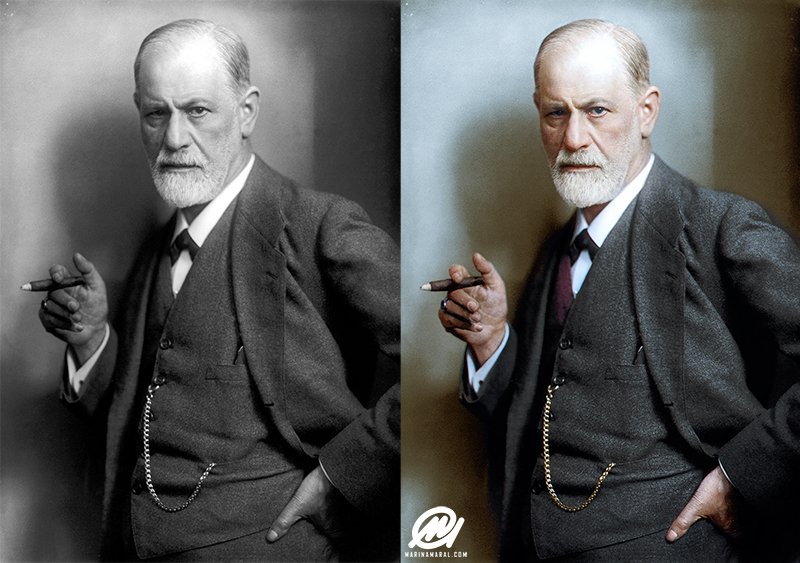21-year-old Lewis Powell was hanged #OnThisDay in 1865. He was a conspirator with John Wilkes Booth, who assassinated President Abraham Lincoln. 
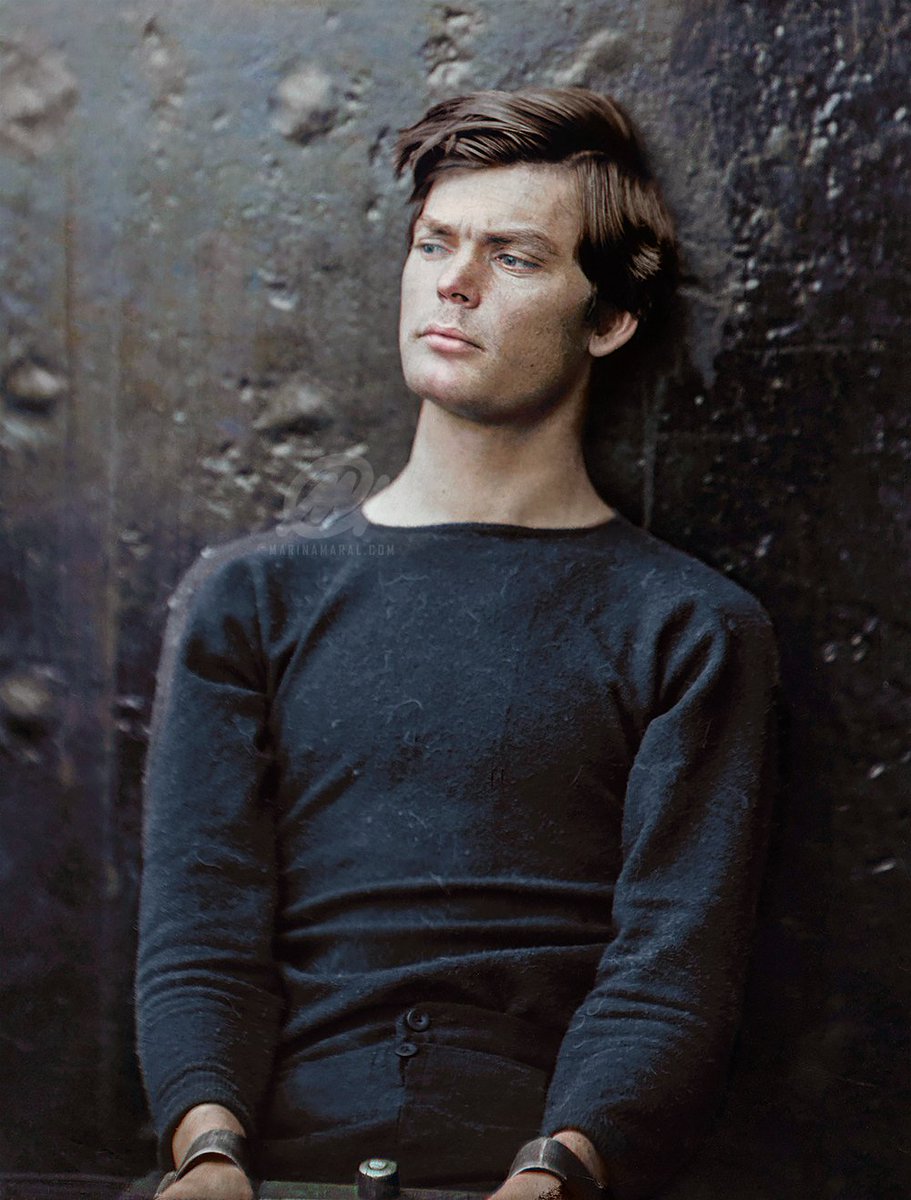
One evening in early February, Powell (using the alias "Mr. Wood") appeared at Mary Surratt's boarding house and asked for John Surratt, who was not at home. 

He then requested something to eat and a place to stay, and Mrs. Surratt granted both requests after her son returned home and vouched for "Mr. Wood". Powell told Louis Weichmann, who was a boarder in the house, that "Wood" was a clerk in Parr's china shop in Baltimore.
Powell left the next day.
His role in the plot almost came to an end when, on March 12, 1865, he beat a black maid at the Branson boarding house. She had him arrested and accused him of being a Confederate spy.
His role in the plot almost came to an end when, on March 12, 1865, he beat a black maid at the Branson boarding house. She had him arrested and accused him of being a Confederate spy.
It was a serious charge: Maryland was under martial law, and the Union Army's Provost Marshal had supervision over such cases. Using the name "Lewis Paine", Powell swore he was from Fauquier County, Virginia, and knew nothing about the war.
Declaring he was only 18 years old, he pretended to be stupid and not understand the English language too well. Lacking evidence that he was a spy, the Provost Marshal released Powell on March 14.
Powell took an oath of allegiance to the US, and the Provost Marshal wrote on his allegiance form that "Lewis Paine" was to live north of Philadelphia, Pennsylvania, for the duration of the war.
The Provost Marshal had foolishly written the "stay north" order in pencil. Powell later erased it from his oath of allegiance.
The day before Powell was released, John Surratt sent a telegram to Parr in Baltimore, telling him to send Powell immediately to Washington.
The day before Powell was released, John Surratt sent a telegram to Parr in Baltimore, telling him to send Powell immediately to Washington.
Powell arrived at the Surratt boarding house and identified himself as Reverend Lewis Payne, a Baptist preacher. When members of the boarding house recognized him as "Mr. Wood" from several weeks earlier, Powell explained that he knew a "Mr. Wood" and that they had been confused.
Powell was not the only conspirator to have arrived in the city. Booth had assembled his entire team—which consisted of John Surratt, Lewis Powell, Samuel Arnold, George Atzerodt, David Herold, and Michael O'Laughlen. 
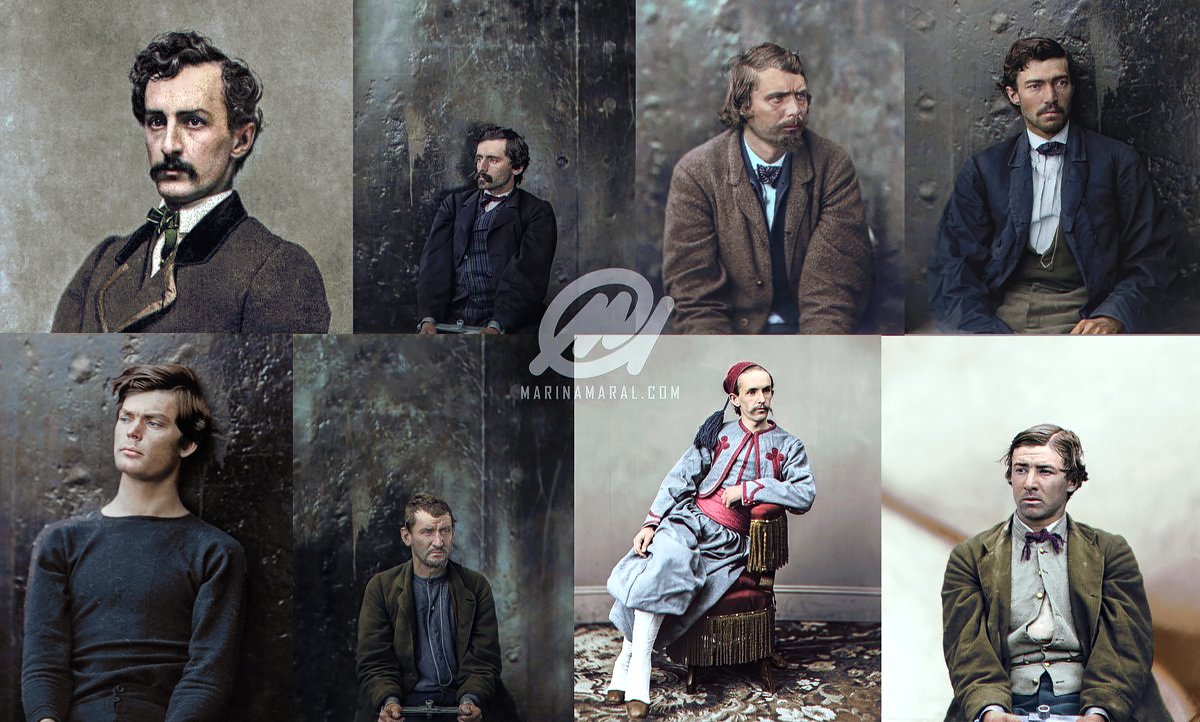
Booth wanted the men to plan to kidnap Lincoln the next time he attended a play at Ford's Theatre. He then rented the President's Box on March 15, and provided tickets to Powell and Surratt (photo) so that they could familiarize themselves with the layout of the theater. 
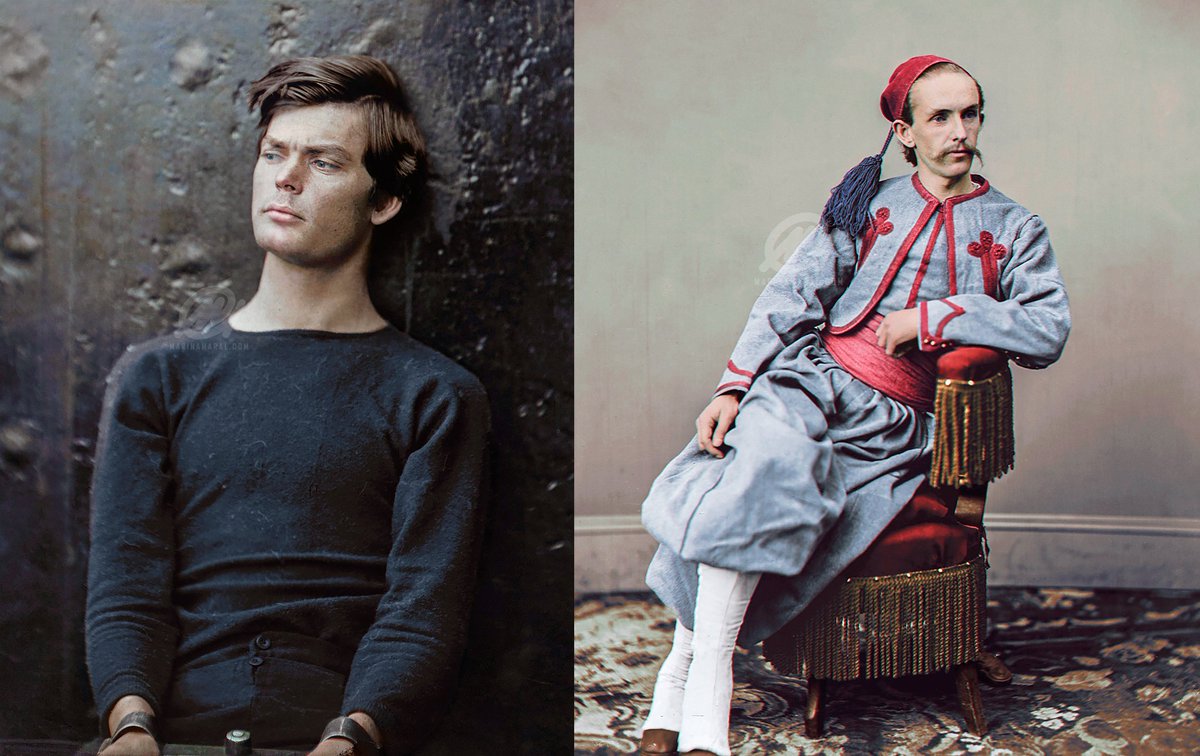
The group then had a late-night planning meeting at Gautier's Restaurant at 252 Pennsylvania Avenue. It was the first time that Arnold and O'Laughlen (photo) were meeting the others, and it was the first time Booth revealed his plan to kidnap Lincoln from Ford's Theatre. 
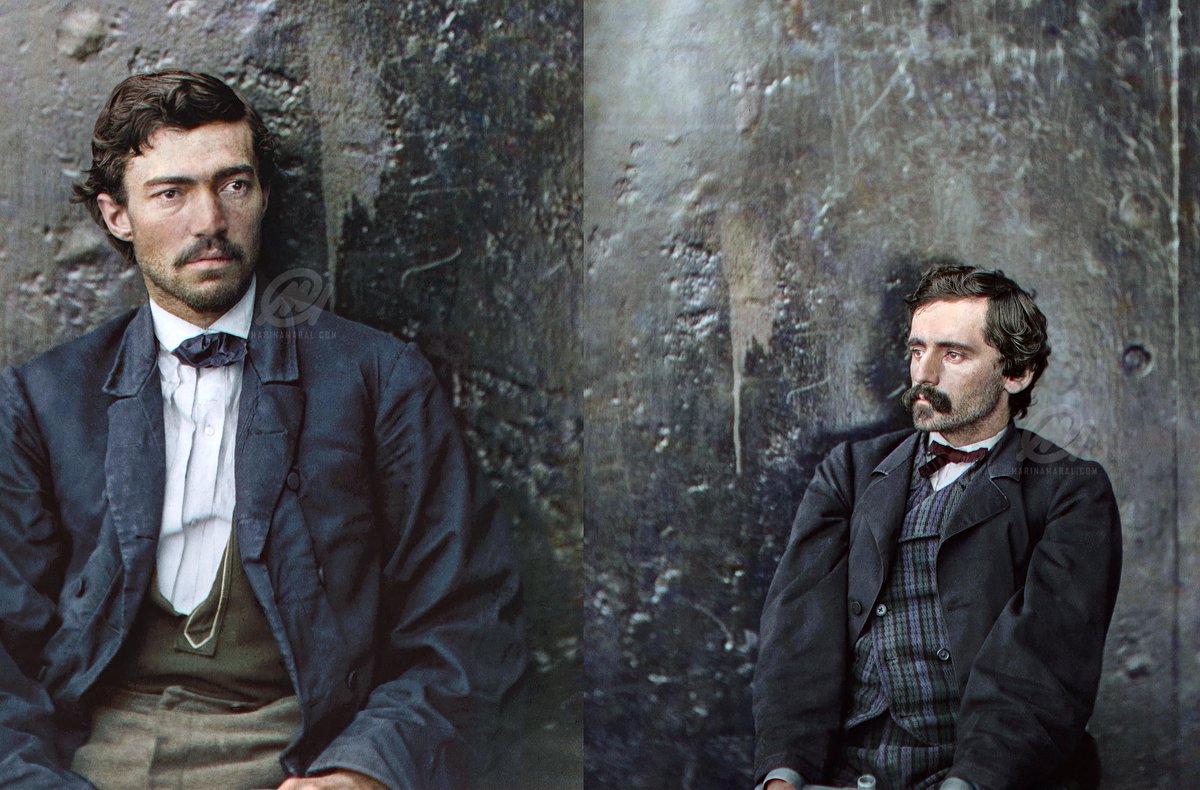
Booth assigned Powell (whom he called "Mosby") the job of catching a handcuffed Lincoln as he was lowered from the President's Box onto the stage. Arnold said that Powell, the strongest of the men, should be the one to subdue and handcuff Lincoln, not catch him from below.
As the men argued, Booth kept altering his plan. Throughout the meeting, Arnold and O'Laughlen expressed their anger at Booth. The meeting broke up at 5 a.m. after Arnold said trying to kidnap Lincoln from a theater full of people in the middle of the city was suicidal.
On the morning of March 17, Booth learned that President Lincoln had been invited to attend a matinee theatrical performance at the Soldiers' Home. The Soldiers' Home was in a rural part of the District of Columbia.
Lincoln usually visited the facility without an escort. The group met in front of the Surratt boarding house at 2:00 p.m. to receive instructions from Booth. He sent Herold out to the Surratt tavern with equipment, and informed the others that they should wait at a local saloon..
while he rode out to the Soldier's Home to scout the area. When Booth arrived at the Soldier's Home, he learned that Lincoln had decided to address a group of Indiana soldiers at a downtown hotel instead. Powell and the other conspirators never left the tavern.
Powell returned to the Branson boarding house that evening, then traveled to New York City with Booth on March 21. There is evidence that Booth and Powell then traveled to Toronto, Upper Canada, a major center of Confederate activity.
On April 11, President Lincoln addressed a crowd from the balcony on the north side of the White House. In this speech, Lincoln discussed his plans for accepting the rebellious states back into the Union, and singled out Louisiana as the first he'd like to see do so.
Lincoln announced that he also wanted to see African Americans given the right to vote. Booth and Powell stood on the White House lawn listening to the speech. Booth told Powell, "That means nigger citizenship. That will be the last speech he will ever make." 

It is unclear just when Powell learned that the kidnap plot had turned to an assassination. There is testimony from the nurse attending the Secretary of State indicating that Powell may have learned of his role to assassinate Seward on Thursday, April 13.
A man fitting Powell's description appeared at the Seward home that day to inquire about his health. Powell himself was inconsistent. He once said he learned he was to kill Seward on the morning of Friday, April 14, but later claimed he did not know until the evening of April 14.
On the afternoon of April 14, Booth learned that Abraham Lincoln would be attending a play at Ford's Theatre that night. Booth decided that the time had come to kill Lincoln.
Booth sent David Herold (photo) to tell Powell the news.
The two men probably spent the afternoon and early evening at the Canterbury Music Hall on Pennsylvania Avenue, where Powell met and possibly had a tryst with Mary Gardner, a performer there.
The two men probably spent the afternoon and early evening at the Canterbury Music Hall on Pennsylvania Avenue, where Powell met and possibly had a tryst with Mary Gardner, a performer there.

At 8:00 p.m. that night, Booth, Atzerodt, Herold, and Powell met in Powell's room at the Herndon House in Washington, D.C., where Booth assigned roles. They would strike that very night, Booth said.
Powell (accompanied by Herold) was to go to the home of Secretary of State William H. Seward and kill him. Atzerodt was to assassinate Vice President Andrew Johnson. Booth was to murder Lincoln at Ford's Theatre.
At about 10:30 p.m. Powell was escorted to the Seward residence on Lafayette Square near the White House by David Herold. Seward had been injured in a carriage accident on April 5, and suffered a concussion, broken jaw, broken right arm, and many serious bruises.
Local newspapers reported that Seward was at home convalescing, so Powell and Herold knew where to find him. Powell was armed with a Whitney revolver and large knife, and wore black pants, a long overcoat, a grey vest, a grey dress coat, and a hat with a wide brim.
Herold waited outside, holding Powell's horse. Powell knocked and rang the bell, and the door was answered by William Bell, Seward's African American butler. Holding up a small bottle, Powell claimed that Seward's physician, Dr. T.S. Verdi, had sent some medicine to the house.
Bell was suspicious, as Dr. Verdi had departed the home only an hour earlier and left instructions for Seward not to be disturbed. Bell asked Powell to wait, but Powell pushed past him and began mounting the stairs to the second-floor bedrooms.
Seward's son, Frederick, appeared at the top of the steps in his nightclothes. As Powell reached the second floor, Frederick ordered Powell to stop. Seward's daughter, Fanny, stuck her head out of her father's bedroom door and warned the men that Seward was sleeping.
Powell said he was delivering medicine, and Frederick asked for the bottle. Powell gave it to him, then pulled out his revolver and pulled the trigger with the barrel of the gun against Frederick's chest. The revolver misfired, and Powell pistol-whipped Frederick over and over. 

Bell fled the house screaming "Murder! Murder!" and raced to the office of General Christopher C. Augur next door for help. Terrified, Herold tied Powell's horse to a tree and fled on his own steed.
Powell now drew out his knife and burst through Seward's bedroom door. Inside were Seward's Army nurse, Sergeant George F. Robinson, and Fanny Seward. Powell slashed Robinson on the forearm, and the soldier fell. He then punched Fanny in the face, and leapt onto the bed. 



He savagely began knifing Seward (photo) in the head and throat. Seward, however, was wearing a metal and canvas splint on his jaw, which deflected most of the blows.
Powell managed to cut through his right cheek and along his right throat, causing a large amount of blood flow.
Powell managed to cut through his right cheek and along his right throat, causing a large amount of blood flow.

Believing Seward to be dead, Powell hesitated. Just then, Seward's other son, Augustus, burst into the room. Powell stabbed him several times. Augustus dragged Powell onto the floor. Robinson and Augustus Seward wrestled with the strong, uninjured Powell. 

Powell stabbed Robinson in the chest and shoulder, and slashed a portion of Augustus' scalp from his head.
Powell shouted, "I'm mad! I'm mad!" and fled the room. He was confronted by State Department messenger Emerick "Bud" Hansell in the hallway.
Powell shouted, "I'm mad! I'm mad!" and fled the room. He was confronted by State Department messenger Emerick "Bud" Hansell in the hallway.
Hansell had just arrived at the house moments earlier and found the front door ajar. As Hansell turned to flee, Powell stabbed him in the back. Powell ran out of the house, and threw his knife in the gutter of the street.
Powell now realized that Herold had abandoned him. He had almost no knowledge of the streets of Washington, D.C., and without Herold, he had no way of locating the streets he was to use for his escape route.
He mounted his horse, and began riding at a relatively slow pace north on 15th Street.
Powell's exact movements from the time he was seen cantering up 15th Street until the time he appeared at the Surratt boarding house three days later are not clear.
Powell's exact movements from the time he was seen cantering up 15th Street until the time he appeared at the Surratt boarding house three days later are not clear.
It is well-established that he ended up (by riding or walking) in the far northeast part of the District of Columbia near Fort Bunker Hill, where he discarded his overcoat.
Powell decided to return to Surratt's boarding house to seek help. His clothes were somewhat bloody from the attack at Seward's home, and he'd dropped his hat at the Seward home. 

During much of the Victorian era, it was considered unseemly for any man to be seen in public without a hat, and Powell would have been viewed with suspicion had he tried to enter the city without one. So..
Ripping the sleeve from his undershirt, Powell placed the sleeve on his head in the hope that people would think it was a stocking cap. To complete his disguise as a common laborer, he then stole a pickaxe from a farmyard.
Powell then headed for Surratt's.
Powell then headed for Surratt's.
Despite what Booth had heard earlier in the day, Grant and his wife, Julia Grant, had declined to accompany the Lincolns, as Mary Lincoln and Julia Grant were not on good terms.
Others in succession also declined the Lincolns' invitation, until finally Major Henry Rathbone and his fiancée Clara Harris (daughter of New York Senator Ira Harris) accepted.
At one point Mary Lincoln developed a headache and was inclined to stay home, but Lincoln told her he must attend because newspapers had announced that he would. Lincoln's bodyguard, William H. Crook, advised him not to go, but Lincoln said he had promised his wife.
Lincoln told Speaker of the House Schuyler Colfax, "I suppose it's time to go though I would rather stay" before assisting Mary into the carriage. 

The presidential party arrived late and settled into their box, which was actually two boxes with a dividing partition removed. Lincoln sat in a rocking chair which had been selected especially for him from among the Ford family's personal furnishings. 



Policeman John Frederick Parker was assigned to guard the president's box, but at intermission, he went to a nearby tavern along with Lincoln's footman and coachman. It is unclear whether he returned to the theater, but he was certainly not at his post when Booth entered the box.
Once through a door, which swung inward, Booth barricaded it by wedging a stick between it and the wall. From here a second door led to Lincoln's box. There is evidence that, earlier in the day, Booth had bored a peephole in this second door, though this is not certain.
Booth knew the play by heart, and waited to time his shot with the laughter at one of the best lines of the play, delivered by actor Harry Hawk: "Well, I guess I know enough to turn you inside out, old gal; you sockdologizing old man-trap!".
Lincoln was laughing at this line when he was shot.
Booth opened the door, stepped forward, and shot Lincoln from behind with a derringer.

Booth opened the door, stepped forward, and shot Lincoln from behind with a derringer.


The bullet entered Lincoln's skull behind his left ear, passed through his brain, and came to rest near the front of the skull after fracturing both orbital plates.
Photos: Bone Fragments of Lincoln's Skull and Instruments used in the autopsy.
(National Library of Medicine)

Photos: Bone Fragments of Lincoln's Skull and Instruments used in the autopsy.
(National Library of Medicine)


Lincoln slumped over in his chair and then fell backward. Rathbone turned to see Booth standing in gunsmoke less than four feet behind Lincoln; Booth shouted a word that Rathbone thought sounded like "Freedom!"
Rathbone jumped from his seat and struggled with Booth, who dropped the pistol and drew a knife, then stabbed Rathbone in the left forearm. Rathbone again grabbed at Booth as he prepared to jump from the box to the stage, a twelve-foot drop.
Booth's riding spur became entangled on the Treasury flag decorating the box, and he landed awkwardly on his left foot. As he began crossing the stage, many in the audience thought he was part of the play.
Booth held his bloody knife over his head, and yelled something to the audience.
While it is traditionally held that Booth shouted the Virginia state motto, Sic semper tyrannis! ("Thus always to tyrants") either from the box or from the stage, witness accounts conflict.
While it is traditionally held that Booth shouted the Virginia state motto, Sic semper tyrannis! ("Thus always to tyrants") either from the box or from the stage, witness accounts conflict.

Major Joseph B. Stewart climbed over the orchestra pit and footlights and pursued Booth across the stage.
The screams of Mary Lincoln and Clara Harris, and Rathbone's cries of "Stop that man!" prompted others to join the chase as pandemonium broke out.
The screams of Mary Lincoln and Clara Harris, and Rathbone's cries of "Stop that man!" prompted others to join the chase as pandemonium broke out.

Booth ran across the stage and exited through a side door, en route stabbing orchestra leader William Withers, Jr. Booth had left a horse waiting outside in the alleyway.
Lincoln died at 7:22 a.m. on April 15.
Painting: The Last Hours of Abraham Lincoln by Alonzo Chappel, 1868
Lincoln died at 7:22 a.m. on April 15.
Painting: The Last Hours of Abraham Lincoln by Alonzo Chappel, 1868

Booth had assigned George Atzerodt (photo) to kill Vice President Andrew Johnson, who was staying at the Kirkwood House in Washington. Atzerodt was to go to Johnson's room at 10:15 p.m. and shoot him. 

(I know you had thought it was over....)
On April 14 Atzerodt rented the room directly above Johnson's; the next day he arrived there at the appointed time and, carrying a gun and knife, went to the bar downstairs, where he asked the bartender about Johnson's character and behavior. 

He eventually became drunk and wandered off through the streets, tossing his knife away at some point. He made his way to the Pennsylvania House Hotel by 2 a.m., where he obtained a room and went to sleep.
Within half an hour of fleeing Ford's Theatre, Booth crossed the Navy Yard Bridge into Maryland. An army sentry questioned him about his late-night travel; Booth said that he was going home to the nearby town of Charles.
Though it was forbidden for civilians to cross the bridge after 9 p.m., the sentry let him through. David Herold made it across the same bridge less than an hour later and rendezvoused with Booth.
After retrieving weapons and supplies previously stored at Surattsville, Herold and Booth went to the home of Samuel A. Mudd, a local doctor (photo), who splinted the leg Booth had broken in jumping from the presidential box, and later made a pair of crutches for him. 

After a day at Mudd's house, Booth and Herold hired a local man to guide them to Samuel Cox's house. Cox in turn took them to Thomas Jones, a Confederate sympathizer who hid Booth and Herold in Zekiah Swamp for five days until they could cross the Potomac River.
On the afternoon of April 24, they arrived at the farm of Richard H. Garrett, a tobacco farmer, in King George County, Virginia. Booth told Garrett he was a wounded Confederate soldier. 

The hunt for the conspirators quickly became the largest in U.S. history. Edwin M. Stanton personally directed the operation, authorizing rewards of $50,000 (equivalent to $800,000 in 2017) for Booth and $25,000 each for Herold and John Surratt. 

Booth and Herold were sleeping at Garrett's farm on April 26 when soldiers from the 16th New York Cavalry arrived and surrounded the barn, then threatened to set fire to it.
Herold surrendered, but Booth cried out, "I will not be taken alive!"
Herold surrendered, but Booth cried out, "I will not be taken alive!"
Sergeant Boston Corbett (photo) crept up behind the barn and shot him in "the back of the head about an inch below the spot where his shot had entered the head of Mr. Lincoln", severing his spinal cord. 

Booth was carried out onto the steps of the barn. A soldier poured water into his mouth, which he spat out, unable to swallow.
Booth told the soldier, "Tell my mother I died for my country."
Booth told the soldier, "Tell my mother I died for my country."
Unable to move his limbs, he asked a soldier to lift his hands before his face and whispered his last words as he gazed at them: "Useless ... useless."
He died on the porch of the Garrett farm two hours later.
He died on the porch of the Garrett farm two hours later.

Without Herold to guide him, Powell did not find his way back to the Surratt house until April 17. He told detectives waiting there that he was a ditch-digger hired by Mary Surratt, but she denied knowing him.
Both were arrested.

Both were arrested.


George Atzerodt hid at his cousin's farm in Germantown, Maryland, about 25 miles (40 km) northwest of Washington, where he was arrested April 20. 

The remaining conspirators were arrested by month's end, except for John Surratt, who fled to Quebec where he was hidden by Roman Catholic priests.
He was finally captured by an agent of the United States in Egypt in November 1866.
He was finally captured by an agent of the United States in Egypt in November 1866.

Scores of persons were arrested, including many tangential associates of the conspirators and anyone having had even the slightest contact with Booth or Herold during their flight.
The accused were tried by a military tribunal ordered by Johnson, who had succeeded to the presidency on Lincoln's death. The prosecution was led by U.S. Army Judge Advocate General Joseph Holt, assisted by Congressman John A. Bingham and Major Henry Lawrence Burnett.
The seven-week trial included the testimony of 366 witnesses. All of the defendants were found guilty on June 30.
Mary Surratt, Lewis Powell, David Herold, and George Atzerodt were sentenced to death by hanging;
Samuel Mudd, Samuel Arnold, and Michael O'Laughlen were sentenced to life in prison.
Edmund Spangler was sentenced to six years.
Samuel Mudd, Samuel Arnold, and Michael O'Laughlen were sentenced to life in prison.
Edmund Spangler was sentenced to six years.
Mary Surratt, Powell, Herold, and Atzerodt were hanged in the Old Arsenal Penitentiary #OnThisDay in 1865.
Mary Surratt was the first woman executed by the United States government.
Mary Surratt was the first woman executed by the United States government.
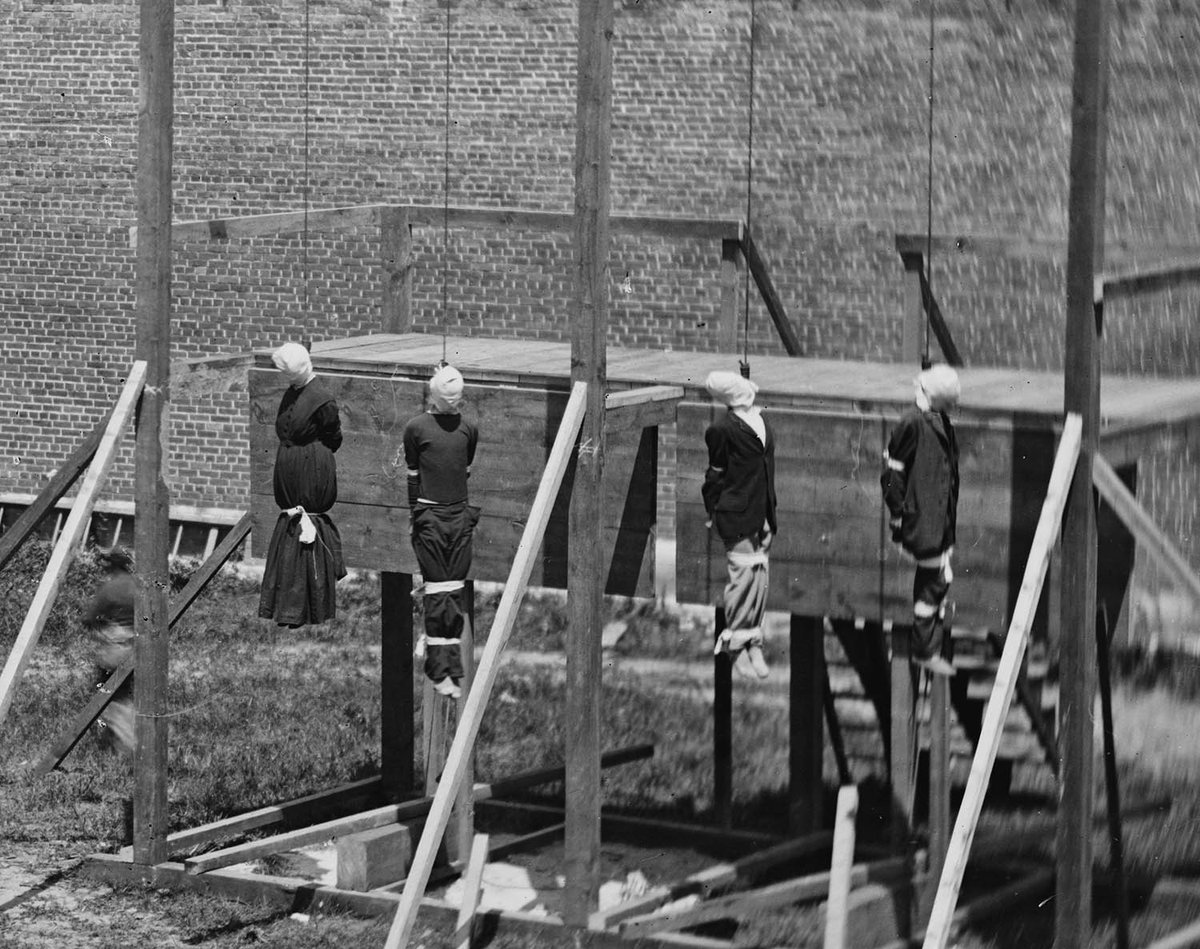
O'Laughlen died in prison in 1867. Mudd, Arnold, and Spangler were pardoned in February 1869 by Johnson. Spangler, who died in 1875, always insisted his sole connection to the plot was that Booth asked him to hold his horse.
John Surratt stood trial in Washington in 1867.
The jury could not reach a verdict and he was released.
The jury could not reach a verdict and he was released.
Fun facts:
1 - Thanks to information found on testimonials and with @BoothieBarn's help, I was able to reproduce the actual colors of their clothing.
2 - I colorized the photo of the hanging for The Colour of Time, but we had to drop it due to lack of space.
1 - Thanks to information found on testimonials and with @BoothieBarn's help, I was able to reproduce the actual colors of their clothing.
2 - I colorized the photo of the hanging for The Colour of Time, but we had to drop it due to lack of space.
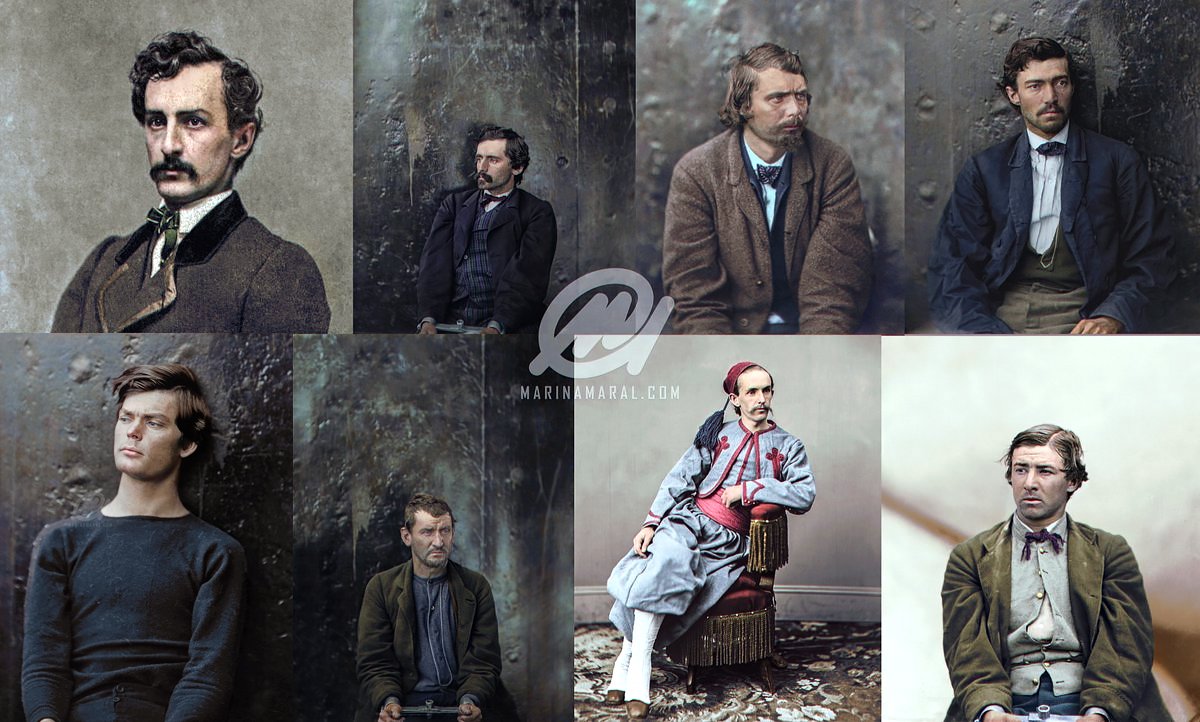
(So you need to buy millions of copies of The Colour of Time so that we know that you want The Colour of Time 2).
This thread was huge, but hopefully, you learned something new today!
This thread was huge, but hopefully, you learned something new today!
And as I always say, if you want to support my work, please buy a copy of the book!
*DID I MENTION THAT IT WILL BE OUT IN JUST A FEW WEEKS?*
amazon.co.uk/Colour-Time-Hi…
*DID I MENTION THAT IT WILL BE OUT IN JUST A FEW WEEKS?*
amazon.co.uk/Colour-Time-Hi…
Signed copies - shipping worldwide.
- Why October?
- Because that's when I'll be in the UK to sign them. The copies are signed by @dgjones too. x
goldsborobooks.com/product/the-co…
- Why October?
- Because that's when I'll be in the UK to sign them. The copies are signed by @dgjones too. x
goldsborobooks.com/product/the-co…
Seward as he looked before he was attacked (right) by Lewis Powell. He survived but was disfigured by the knife attack (left). 

For commissions marinamaral.com/contact
Send me your feedback! It is always very helpful.
This photograph (and those of the other conspirators) was taken when he was aboard the USS Saugus to await his trial.
• • •
Missing some Tweet in this thread? You can try to
force a refresh







